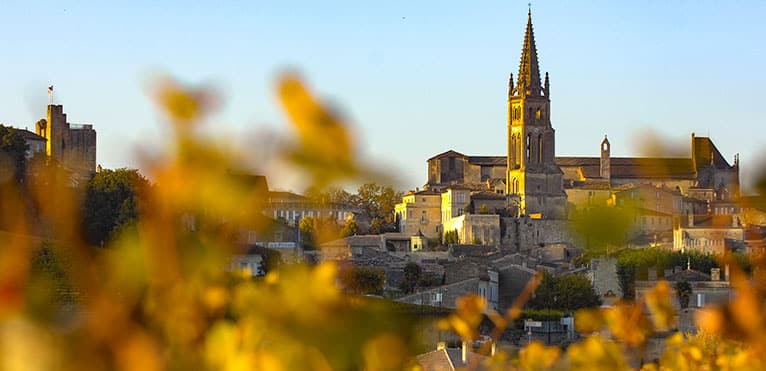
Contents
Bordeaux-Côtes-de-Francs is an appellation of the Libournais region, on the right bank of Bordeaux. Until 2009, it was an Appellation d’Origine Contrôlée; it is now a geographical denomination within the Côtes-de-Bordeaux appellation. This vineyard produces red, white and sweet wines.
AOC Francs-Côtes-de-Bordeaux is a smallvineyard in the Bordeaux region.
Bordeaux’s smallest appellation was recognized as an Appellation d’Origine Contrôlée in 1967 by the Institut National de l’Origine et de la Qualité (INAO). Its history took a turn in 2009, when it joined the Côtes-de-Bordeaux appellation by marrying with Blaye, Cadillac and Castillon. This union, which brings together over 950 producers from the Bordeaux region, is helping this small vineyard to gain greater recognition. The Bordeaux-Côtes-de-Francs appellation now includes 41 estates and a total of 2 cooperative wineries.
This vineyard, located northeast of Bordeaux, covers 510 hectares spread over 3 communes: Francs, Saint-Cibard and Tayac. Despite its easterly exposure, this vineyard enjoys plenty of sunshine thanks to its altitude, with its main elevations rising to 100 meters. In fact, this is the vineyard with the highest altitude in the Bordeaux region. Despite this sunshine, the climate is oceanic, which means that winters are cold and harsh, although summers are quite hot.
The vineyards are mainly planted on clay-limestone soils. They combine the freshness of the clay with the filtering properties of the limestone, enabling the different Bordeaux-Côte-de-Franc grape varieties to flourish. This vineyard produces mainly red wines, and its output is estimated at 25,000 hectolitres per year. The majority of these wines are made with Merlot, which accounts for around 60% of the grape varieties. Cabernet-Franc, Cabernet-Sauvignon and Malbec, other typical Bordeaux grape varieties, are also grown here. The white wines, vinified in smaller quantities, are made with Semillon, Muscadelle and Sauvignon Blanc.
Bordeaux-Côtes-de-Francs aretannic red wines.
To the eye, Bordeaux-Côtes-de-Francs red wines are garnet-red. On the nose, red fruit aromas are predominant in the wine’s youth. With age, the nose becomes more complex, releasing aromas of spices, such as vanilla, and animal nuances with notes of leather. In warmer years, the wines release aromas of dried fruit such as prunes. These rich, tannic red wines have a lively, powerful attack on the palate. In addition, the palate is woody, due to the barrel ageing of these wines. The well-presented tannins give these wines an ageing potential of 5 to 10 years.
White wines have a golden yellow color with green highlights. The nose reveals notes of honey, exotic fruits such as pineapple and citrus. Some Bordeaux Côtes-de-Francs white wines reveal woody, toasty aromas, even vanilla. These rich, fruity white wines are elegant and lively on the palate. We recommend tasting these wines after 2 years’ storage.
Red or white meat to accompany Bordeaux-Côtes-de-Francs
Red wines are the perfect accompaniment to red or white meats, sweet and savory dishes, or even spicier dishes. For example, they go very well with a pork knuckle with prunes or a chicken and lamb tagine. Their optimal tasting temperature is between 15 and 17 degrees.
White wines are best paired with white meat, fish and seafood. They should be enjoyed at a temperature of between 7 and 11 degrees, and their fruity character is the perfect accompaniment to marinated spider crab, blanquette de veau à la crème or sea bream with lemon.
2009 and 2010 great vintages for Bordeaux-Côtes-de-Francs
The Bordeaux Côtes-de-Francs appellation is distinguished by two vintages, reflecting the exceptional quality and character of its wines. Indeed, the vineyard stood out in 2009 with an excellent vintage and in 2010 with a great vintage.
2 outstanding estates in AOC Bordeaux-Côtes-de-Francs
Château Marsau
Château Marsau, founded in 1994, is a family estate owned by the Chardonnier family. The vineyard, located on one of the highest points in the commune of Francs, covers 12 hectares. The Château’s wines are made exclusively from Merlot, the only grape variety grown on the estate. The vines are meticulously tended and the wine is then matured in barrels. At the end of this vinification process, the Château produces two wines: “Château Marsau” and a second wine, “Prélude”.
Château Brethous
Château Brethous, a family estate taken over in 1963 by the Verdier family, set out at the time to develop the vineyard while respecting the environment. So, inspired by their parents’ ecological ideals, the heirs converted the estate to organic farming in 2009. The first cuvée produced by the estate and certified “organic” by the “Agriculture Biologique” label was released in 2012. The estate’s ecological values are complemented by the ambition of a human-scale estate respecting family values. These ideals reinforce the prestige of this château, already conferred by the quality of its wines.